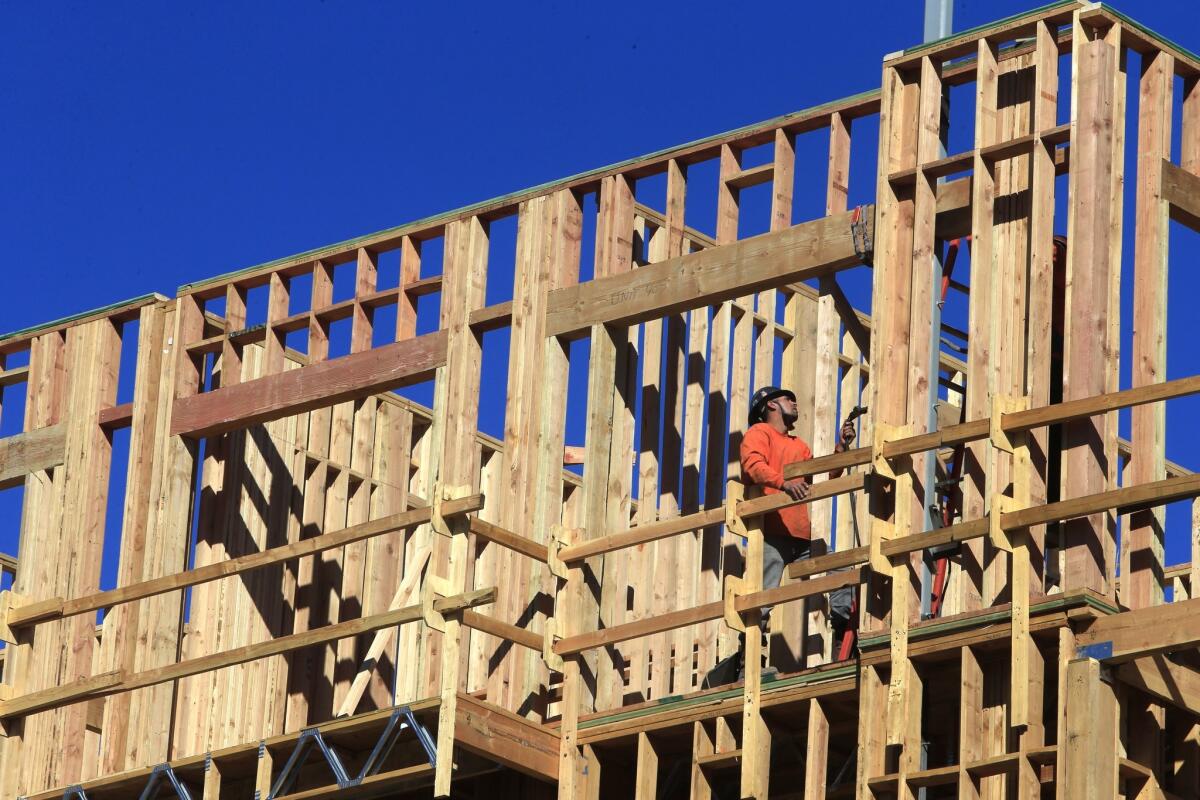Editorial: Jerry Brown killed redevelopment in California. Gavin Newsom should bring it back to life

- Share via
To deal with California’s crushing budget crisis in 2011, then-Gov. Jerry Brown snuffed out “redevelopment” — an investment program designed to bring jobs, construction and growth to struggling neighborhoods.
Local redevelopment agencies targeted “blighted” communities for investments in public buildings, business incubators, housing, parks and other magnets for employers and investors. When these investments helped to boost property values, the new property tax revenue would go back to the agencies to reinvest in the area, rather than going into state and county coffers.
Eliminating the agencies freed up billions of property tax dollars to help ease deficits and lighten the cuts the state had to make to government services. It was the right choice, and not just for budget reasons. Some redevelopment agencies had squandered the money or made questionable investments in private developments, and the program was due for serious reform.
But with the demise of redevelopment, cities lost a powerful tool and a huge pot of money to build affordable housing. Indeed, the state’s redevelopment statute required agencies to use 20% of the new property tax revenue for affordable housing, a mandate that generated some $1billion a year to build and preserve affordable housing. The loss of that money is particularly painful now, as communities scramble to address the housing and homelessness crisis.
It’s time for Gov. Gavin Newsom and lawmakers to come up with Redevelopment 2.0.
Cities need an ongoing source of money for affordable housing. This is especially important as Newsom and state lawmakers are pushing cities to zone for more homes for Californians at all income levels. Although the need for more market-rate housing can be addressed by lowering regulatory and political barriers, the critical shortage of affordable units is both a political and a financial problem. Simply put, developers can’t produce the amount of affordable housing needed without public subsidies.
After 2011, the Legislature and Brown adopted a series of redevelopment-like programs with an alphabet soup of acronyms. There are Enhanced Infrastructure Financing Districts, or EIFDs; Community Revitalization and Investment Authorities, or CRIAs; and Affordable Housing Authorities, or AHAs. But these programs were mired in complicated rules and so haven’t seen much use.
Redevelopment advocates expected Gov. Gavin Newsom to be an eager supporter of Redevelopment 2.0. He said repeatedly on the campaign trail that he wanted to bring back some form of redevelopment to kick-start housing construction. But the governor changed his tune when he unveiled his first budget proposal in January.
“Bringing back redevelopment? I looked at it,” Newsom said then. “We’re putting more money [toward affordable housing] now than when we killed redevelopment.”
That’s true — to a point. California is spending about $3 billion more this year than last year to subsidize affordable housing, thanks to the budget surplus and voter-approved housing measures. But those are one-time allocations and temporary funding streams. Redevelopment provided ongoing funding, and affordable housing is an ongoing need.
Nevertheless, the governor’s skepticism has already prompted Assemblyman David Chiu (D-San Francisco) to shelve his bill to revive redevelopment. Sen. Jim Beall (D-San Jose) is hoping his version will pass muster with Newsom.
Beall’s Senate Bill 5 is an attempt to bring back redevelopment with guard rails that limit spending to specific types of projects and provide independent oversight. It would allow local agencies to keep a portion of the local property tax revenue that would normally go to public education. The state would backfill the school funding so there’s no loss to education spending.
Senate Bill 5 wouldn’t be cheap. The proposal could cost the state general fund $2 billion or more a year when fully implemented in 2030. For comparison, Newsom’s budget this year allocates a “historic” $1.75 billion toward housing production.
The bill would require that at least half of the revenue that local agencies keep be spent on affordable housing construction. The rest of the funds could be used for housing near transit and the infrastructure needed to support denser development, such as parks or transportation. The bill also allows spending on projects designed to prepare communities for the effects of climate change, including wildfires and sea level rise.
A state committee would oversee spending and sign off on projects. That would provide much-needed oversight to help prevent the pitfalls of the old program. But the history of redevelopment should guide the Legislature’s efforts to revive the program, not deter it. The idea behind redevelopment — to give local governments the ability to launch community revitalization projects that the private sector wouldn’t do alone — is still worthwhile. And the needs are at least as great.
More to Read
A cure for the common opinion
Get thought-provoking perspectives with our weekly newsletter.
You may occasionally receive promotional content from the Los Angeles Times.










